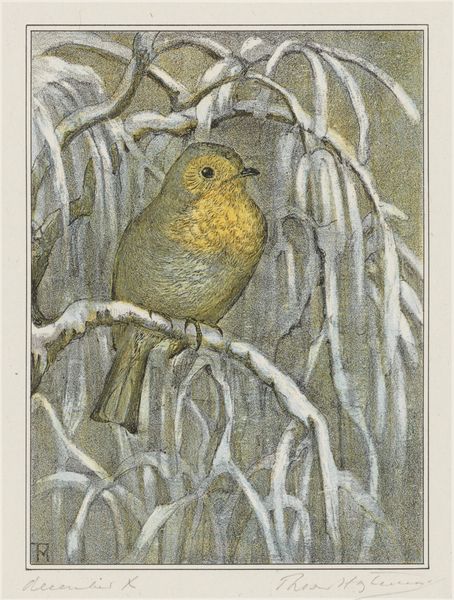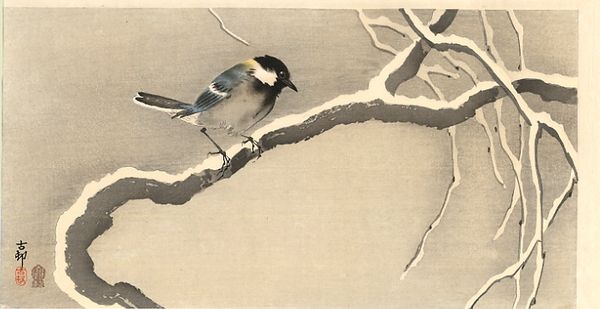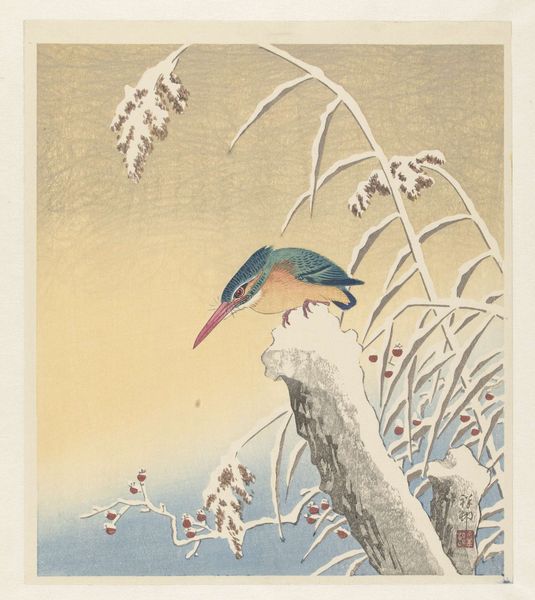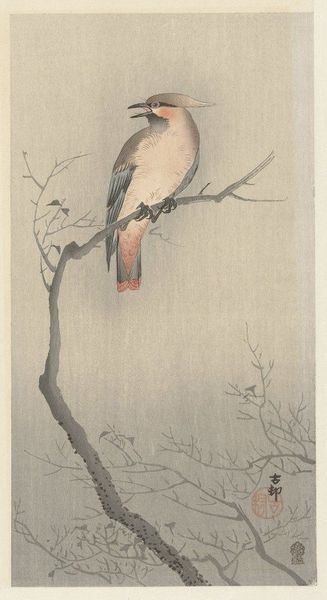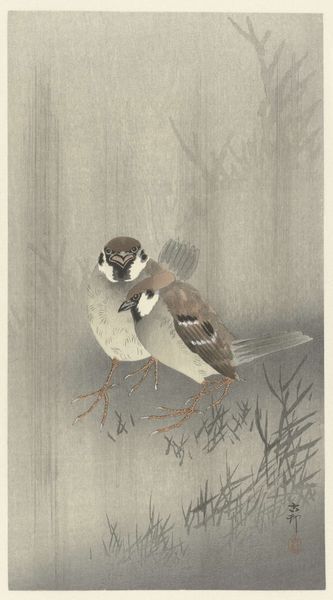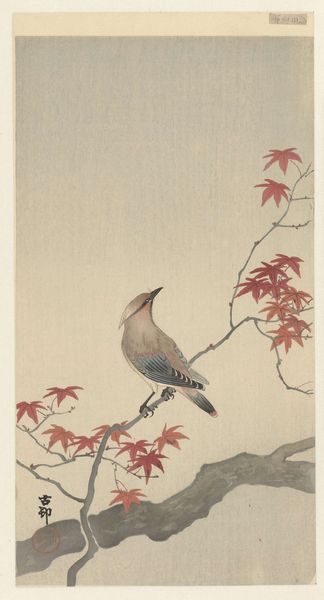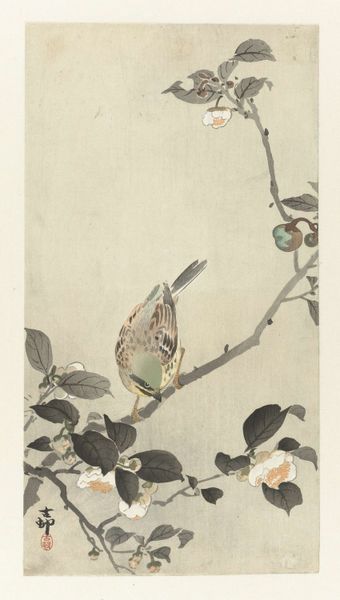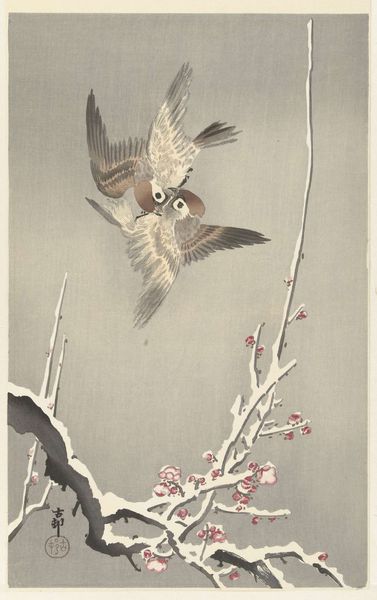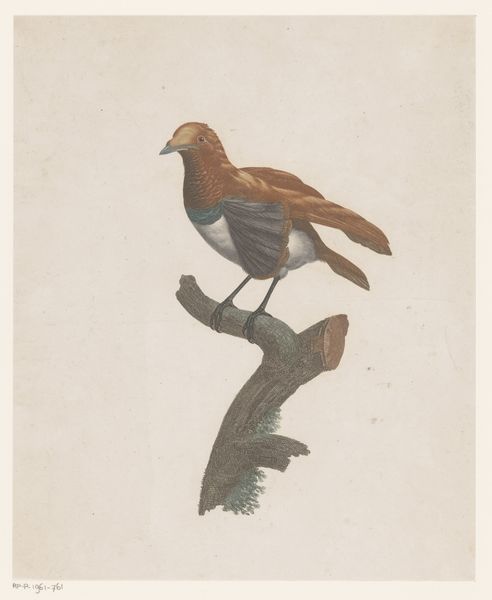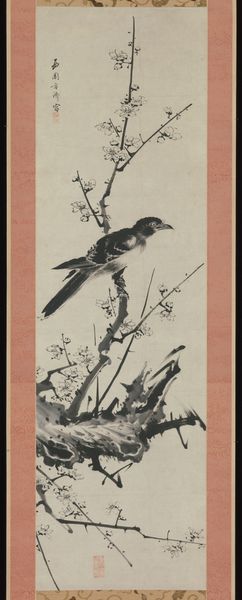
Dimensions: height 331 mm, width 179 mm
Copyright: Rijks Museum: Open Domain
Editor: So, this woodblock print, "Pestvogel op besneeuwde tak," or "Waxwing on Snowy Branch," by Ohara Koson, dating from between 1900 and 1930, has such a delicate, melancholic mood. I'm curious, with your expertise, how do you read into a seemingly simple image like this? Curator: It's deceptively simple, isn't it? On the surface, we see a charming bird in a wintery scene, but understanding its cultural context unlocks deeper meanings. Think about the Ukiyo-e tradition it comes from; these prints weren't just decorative, they were a form of popular art, accessible to the masses. Consider, also, how often nature—particularly birds—featured in art and poetry across Asia. What might a lone bird in winter signify? Editor: Loneliness? Resilience, perhaps? It definitely makes me think of nature’s cycles and survival against harsh conditions. Curator: Precisely! And within a culture facing increasing Western influence during the Meiji era, Koson's choice to focus on traditional themes like this bird becomes almost a political act, reaffirming cultural identity and resilience. Can we also see the artist subtly pushing against that tradition though? Look closely at the bird; does its pose feel like typical Ukiyo-e? Editor: I see what you mean, it's quite realistic, almost photographic. It’s not just a symbol; it feels like Koson is truly observing and capturing this individual creature. So, is the realism also a statement of some kind? Curator: Possibly. It merges traditional symbolism with modern observation, offering a nuanced commentary on the changing world. In Koson's work, we see a negotiation, a dance between cultural preservation and artistic innovation. It's not just a pretty bird on a branch; it's a reflection on identity, tradition, and the individual's place within a rapidly modernizing society. Editor: I see that now. It’s fascinating how one image can contain so much, from personal observation to commentary on society. Thanks for bringing that perspective. Curator: My pleasure. It highlights how even seemingly simple images can become powerful tools for cultural expression and, subtly, cultural resistance.
Comments
No comments
Be the first to comment and join the conversation on the ultimate creative platform.
